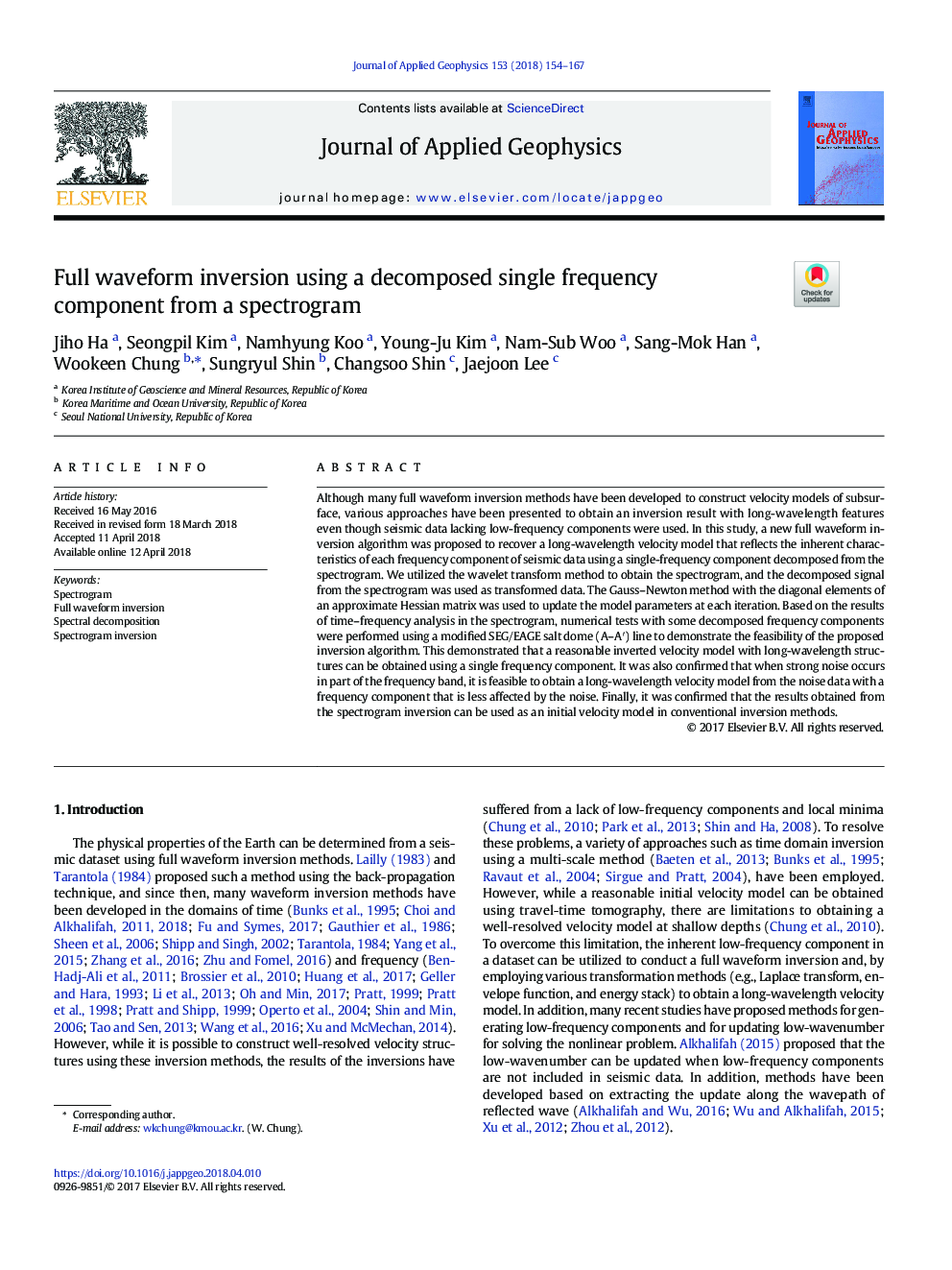| Article ID | Journal | Published Year | Pages | File Type |
|---|---|---|---|---|
| 8915394 | Journal of Applied Geophysics | 2018 | 14 Pages |
Abstract
Although many full waveform inversion methods have been developed to construct velocity models of subsurface, various approaches have been presented to obtain an inversion result with long-wavelength features even though seismic data lacking low-frequency components were used. In this study, a new full waveform inversion algorithm was proposed to recover a long-wavelength velocity model that reflects the inherent characteristics of each frequency component of seismic data using a single-frequency component decomposed from the spectrogram. We utilized the wavelet transform method to obtain the spectrogram, and the decomposed signal from the spectrogram was used as transformed data. The Gauss-Newton method with the diagonal elements of an approximate Hessian matrix was used to update the model parameters at each iteration. Based on the results of time-frequency analysis in the spectrogram, numerical tests with some decomposed frequency components were performed using a modified SEG/EAGE salt dome (A-Aâ²) line to demonstrate the feasibility of the proposed inversion algorithm. This demonstrated that a reasonable inverted velocity model with long-wavelength structures can be obtained using a single frequency component. It was also confirmed that when strong noise occurs in part of the frequency band, it is feasible to obtain a long-wavelength velocity model from the noise data with a frequency component that is less affected by the noise. Finally, it was confirmed that the results obtained from the spectrogram inversion can be used as an initial velocity model in conventional inversion methods.
Related Topics
Physical Sciences and Engineering
Earth and Planetary Sciences
Geophysics
Authors
Jiho Ha, Seongpil Kim, Namhyung Koo, Young-Ju Kim, Nam-Sub Woo, Sang-Mok Han, Wookeen Chung, Sungryul Shin, Changsoo Shin, Jaejoon Lee,
